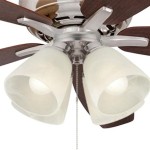Essential Aspects of Room Ceiling Lights Design
When designing a room, the lighting plays a crucial role in creating the desired aesthetic and functionality. Room ceiling lights, in particular, are an important element that can greatly enhance the overall visual appeal and comfort of a space.
In this article, we will delve into the essential aspects of room ceiling lights design, exploring the key factors that contribute to their effectiveness. By understanding these aspects, you can make informed decisions when choosing and installing ceiling lights to optimize their impact in your living space.
1. Light Output and Distribution
The amount and distribution of light emitted by ceiling lights significantly influence the overall illumination of the room. Consider the size of the room, the activities that will take place under the lights, and the desired level of brightness. Proper light output and distribution ensure adequate visibility and prevent glare or shadows.
2. Light Color Temperature
The color temperature of light, measured in Kelvins (K), affects the ambiance of the space. Warm light (2700K-3000K) creates a cozy and inviting atmosphere, while cool light (4000K-5000K) provides a bright and invigorating environment. Choose the color temperature that best suits the desired mood and purpose of the room.
3. Light Fixture Style and Design
The style and design of the ceiling light fixture should complement the overall décor of the room. Modern fixtures offer sleek and minimalist designs, while traditional fixtures may feature ornate details or vintage accents. Consider the shape, size, and materials of the fixture to enhance the aesthetic appeal.
4. Installation Height and Positioning
The height and positioning of ceiling lights are crucial for optimal illumination and aesthetics. Position the lights at a height that provides adequate light coverage without hindering movement or causing glare. Avoid placing lights directly above furniture or seating areas to prevent shadows or discomfort.
5. Dimming Capability
Dimmable ceiling lights offer versatility and control over the light output. They allow you to adjust the brightness to suit different activities and create the desired ambiance. Dimming capabilities also save energy and extend the lifespan of the light bulbs.
6. Energy Efficiency
Energy efficiency is an important consideration when choosing ceiling lights. LED lights and fluorescent lights are energy-saving options that provide high-quality illumination while consuming less power. Look for fixtures with high Lumen-per-Watt (LPW) ratings to maximize energy efficiency.
7. Maintenance and Accessibility
Regular maintenance is essential to ensure the longevity and optimal performance of ceiling lights. Choose fixtures that are easy to clean and service. Consider the accessibility of the lights for cleaning and bulb replacement without the need for specialized equipment or excessive effort.

5 Bedroom Ceiling Designs And Light Ideas To Add Drama

Unique False Ceiling Light Ideas To Brighten Your Bedroom

Master Bedroom Lighting Ideas For A More Stylish Flip The Switch

Led Bedroom Ceiling Lighting Fixtures

A Comprehensive Guide To The Best Ceiling Lights Designs For Your Home

9 Types Of False Ceiling Light Designs To Glam Up Your Home

Types Of Ceiling Lights Ultimate Design Guide Designing Idea

Ceiling Lighting Fixtures Fixture Lights Light Gharexpert Com

3 Best False Ceiling Lights You Can Use To Create Better Ambience

30 Bedroom Ceiling Lights Ideas To Make Your Room Look Elegant
Related Posts







